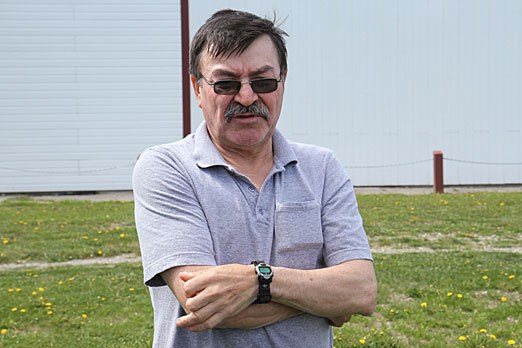Tired of seeing the high number of suicides in his community, Charlie Cheechoo decided a remedy could be to focus on making life better for the youth living in Moose Cree First Nation.
The northern, remote First Nation sits at the mouth of James Bay and has a high level of suicides among its youth.
Cheechoo found a program to allow underprivileged and at-risk youth to experience a fun camping experience filled with traditional activities.
The youth project is in honour of Cheechoo’s friend George Cheechoo, who the program is named after.
He says his community has a big drug problem and that within the last month, they have had at least three suicides.
“It’s pretty sad when someone asks you how many suicides you’ve had,” Cheechoo says.
“I don’t want to know. We’re getting better. We’re starting to realize we have to get off our butts and do the work ourselves. There are a lot of other concerns but for me (youth) is the biggest.”
Cheechoo tells a story of a young man he met that told him his future was being buried in a cemetery and going to a better place. Cheechoo asks who told him all this, and the young man reveals that his own mother did.
At one time, the local arena used to hang the hockey jerseys of the children who committed suicide. Cheechoo doesn’t agree with this practice.
While the act is meant as a memorial, Cheecho says it glorifies suicide.
“The kids are getting the wrong message,” he says. “That’s the biggest problem facing our community – not telling our kids something else; something to believe in.”
That’s where Project George comes in.
But always trying to get activities for youth is difficult especially when it comes to getting funding, he says.
“That’s the reason why I started the outdoor program because one kid approached me and said he wanted to go to camp,” he said.
“His parents weren’t able to go out because it costs money to go out. I take weekends away from my kids to help other kids. But I like doing it. I’ve been volunteering since I was 20 years old.”
But the outdoor project isn’t the only imitative being done in the community.
The community also constructed a youth centre that’s connected to Delores D. Echum Composite School.
Joanne Rickard, a Grade 11 student at the school, says she sees the benefits of having a youth centre and particularly liked the basketball court.
She also says drugs and alcohol are a problem and the number of suicides in the community has made a huge impact.
“I think we’re used to it now because it happens so often,” she says. “I think we need to do more activities. I think the youth centres helps because I see a lot of kids here. I come here a lot as well.”
Joanne has attended school in her home community all her life and says she doesn’t want to travel in order to get a better education.
Knowing everyone and having family makes her feel more at home, she says.
“I think it’s sad when students have to go away,” Joanne says. “I think you should be able to get your education where you are from.”
Brandi Granger, a guidance counsellor, has worked in the community since April 2010.
She started working in Belleville, Ont. before moving to Toronto and Sudbury. It was easy adjusting to the northern First Nation community because she says she’s a small town girl at heart and didn’t like living in the big cities.
About 125 students are in the day program and about a dozen in the evening at the school. But attendance has been declining.
Granger says the school used to have 200 students.
One of the main reasons for the decline in the enrolment has been caused by youth suicides, she says.
“A lot of families will typically pick up and go,” Granger says. “That’s part of the reason. A lot of the students are also getting a lot of the programming down south. Numbers are just declining. We’re the fasting growing population now so it could pick up.”
She says their high school is interesting because they have Grade 7 to Grade 12 courses. Sometimes the school sponsors students to go south when the courses they need for post-secondary education isn’t available.
Despite English, the school doesn’t offer the university level sciences and math courses because of the low attendance, she says.
